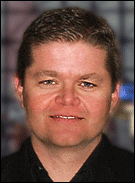Over the past few years, companies have been spending time and money to clean up their item master files—the product catalog that includes information related to specific products, including Universal Product Codes (UPCs), EAN numbers, product class and weight—and have these hosted by third parties, such as UCCnet and Transora. They’ve also spent money integrating their IT systems with these providers of electronic catalogs so they can share the information with supply chain partners. Now, they’re concerned about having to scrap all this effort in order to use Electronic Product Code technologies.
VeriSign and several companies that host electronic catalogs or provide data-synchronization services or software want to reassure customers and potential customers that the EPC Network for sharing EPC data doesn’t replace the electronic catalogs or services they already have in place. At the Uniform Code Council’s U Connect conference in California and the ECR Europe conference in Brussels, VeriSign will team with several data-synchronization service providers to show how the EPC Network can be used to gather data from existing registries of product data and other industry sources.
The issue is important to VeriSign because EPCglobal, the organization commercializing EPC technologies, awarded VeriSign the contract to run the root Object Name Service (ONS) directory, which will point computers to information about products, just as the Web’s Domain Name Service that VeriSign runs points computers to Web sites for the .com, .net, .cc and .tv domain names.
“We’ve been getting a lot of questions about how the EPC Network fits in with UCCnet, the Global Data Synchronization Network and so on,” says Jon Brendsel, director of products for the Naming and Directory Services division at Mountain View, Calif.-based VeriSign. “We want to show that the EPC Network should be viewed as an extension to existing global data-synch networks, not a replacement.”
At U Connect and ECR Europe, VeriSign will run demonstrations with seven organizations that either provide data-synchronization services, host electronic catalogs or offer software for data synchronization. The seven are bTrade, GXS, QRS, Transora, Trigo, UCCnet and WWRE.
VeriSign will hand out 4-inch by 4-inch toy pallets, each with a photo of one of several products on it and bearing an EPC Class 1 RFID tag from Alien Technology. When, for example, attendees scan the pallet with an image of Gillette Mach3 razors at VeriSign’s booth, the EPC number in the tag on the pallet will be read and passed to an application developed for the demo. The application will go out to the root ONS directory, which responds with the network address for Gillette’s local ONS.
The application then goes to the local Gillette ONS, which has an entry for each product Gillette has in the EPC Network. Each entry points to where static product-attribute data is located—that is, which catalog service is hosting information about that product. When the EPC Network is fully built out, the local ONS will also point to one or more EPC Information Services that have dynamic information about a tagged item, such as where the item has been scanned since being manufactured, where it is now, and what its temperature is now if it’s a food item with a temperature sensors.
If the application wants to track and trace a specific item, the application could request that the local ONS point it to a discovery service, the part of the EPC Information Service that locates information related to that item’s EPC in distributed databases on the Internet. The application will download an XML file with a time stamp of when and where the item’s EPC tag was scanned, so that item can be traced.
While the demo is based on elements of the EPC Network that haven’t been standardized yet, VeriSign hopes the demo will demonstrate clearly how the EPC Network works with services that host electronic catalogs, such as Transora, and other data-synchronization services companies are already using. “The Global Data Synchronization Network and the [electronic catalogs] enable companies to synchronize relatively static data that describes a class of product as a whole,” says Brendsel. “The EPC Network’s mission is to handle the discovery and sharing of relatively dynamic data. So the EPC network extends the functionality of the Global Data Synchronization Network.”
RFID Journal University
This special two-day courses presented by RFID Journal and members of Auto-ID Labs addresses the issues you need to understand before deploying RFID/EPC technologies. To learn more, visit RFID U.
|
Washington, D.C. (Reston, Va.) |
June 9 and 10
|
|
|
Chicago |
June 21 and 22
|
|
|
Atlanta
|
July 13 and 14
|
New York City
|
July 26 and 27
|


